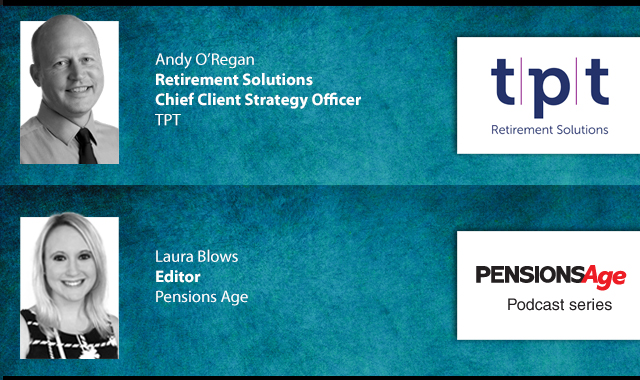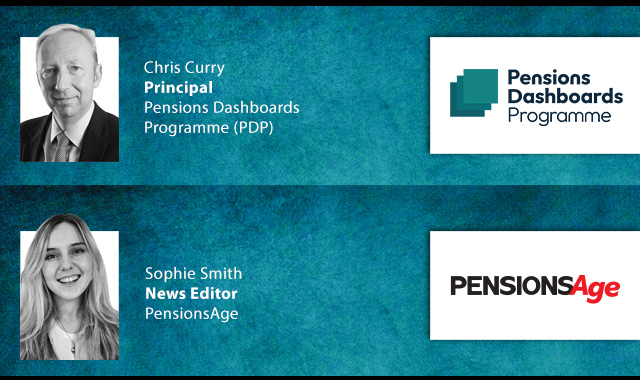At first glance, video games have no relevance to pensions. It is a relatively young, ‘cool’ industry, projected to be worth $100 billion globally by 2017, while the much older and much less cool pensions industry is worth the region of £2 trillion in the UK alone. Yet while David has hype and queues for the latest popular video games, Goliath has to coerce many into having a pension through auto-enrolment. So what lessons can the pensions industry take from the gaming sector to generate that kind of interest by its users?
Engaging through games
The answer is to use games, or ‘gamification’ - where organisations encourage behaviour changes, teach new skills or solve problems by creating a game or encouraging game-like behaviour to drive engagement and learning with the subject matter.
According to Deloitte marketing and insight manager William Grobel, this encouragement is achieved through gaming principles such as competition, status, recognition, challenge and fun to motivate people to perform certain actions. In turn, repeated performance of actions leads to behaviour change and a deeper level of engagement.
Using gaming methods to influence behaviour is nothing new. As Buck Consultants principal Girish Menezes says: “You have seen gamification all your life. It is games such as ‘who can eat their peas the fastest’ when you were five. That is basic gamification.”
‘Gamification’ may conjure up images of video games, but it can mean any type of game-like ability to influence behaviour and increase engagement, such as ‘employee of the month’ generating competition to motivate staff, retail stores’ points and vouchers encouraging customers to collect more points to ‘win’ a prize, and quizzes with prizes for the winners to educate about a subject matter.
So while the use of games and gamification to encourage engagement is nothing new, what has changed in recent years is technology. For instance Deloitte pensions advisory director Neil Campbell notes that mobile is the leading channel for gamification. The value of this gamification market is predicted to increase from $100 million in 2012 to $2.8 billion by 2016.
The use of gamification is prevalent in some industries more than others. For example, the health and fitness sector is increasingly using gamification to drive its message to consumers. A recent Buck Consultants study, Emerging Technology in Health Engagement, found that gamification ranked highest in employers’ perception of effectiveness (at 62 per cent), compared to mobile apps and social media.
The value for pensions
For the pensions industry to get involved, technology research and advisory company Gartner’s research VP Brian Burke recommends it looks at how ‘near neighbour’ industries with similar engagement issues have implemented gamification.
He notes that banks and insurance companies have been more aggressive in adopting gamification. “They face similar challenges, in that their products are complex and the knowledge gap is large, and gamification has been successfully used in these sectors to increase knowledge and change behaviours,” Burke adds.
However, Menezes is unflinching in his assessment of pensions communications as “terrible”, and Shilling senior consultant Samantha Healey states the industry is “notoriously conservative and often reluctant to try something new”.
But as Campbell says, the changes to the annuity market following the Budget mean there are new and important decisions for individuals to make regarding their pensions savings.
“Gamification programmes could be developed to improve levels of understanding and engagement with pension decision making – both in the accumulation phase and at decumulation. Introducing gamification concepts that personalise and align to an individual’s ambitions in retirement and drive them towards achieving this through regular and consistent engagement are key. It can move customers from a long period of detachment during accumulation to insight and interest into what sort of lifestyle they will have in retirement,” he adds.
Healey agrees that the most powerful outcome of gamification is that it makes the experience very personal to the individual. While face-to-face is the preferred form of communication, it is not always feasible, so gamification can be considered an alternative, “providing conscious and meaningful interaction through passive learning”.
There a number of areas within pensions that can be quite complex to understand, such as the effect of different contribution levels, different investment choices, the impact of the age you start investing and different at-retirement choices. These could all benefit from gamification, to educate and engage in a fun way.
Creating a game
Making the subject matters ‘fun’, however, seems easier said than done. To start it is important to remember that the game should be an educational tool teaching high level principles rather than trying to push the player in a certain direction, Menezes notes.
“The sweet spot for gamification is where organisational goals and player goals are aligned,” Burke says. “Successful gamification solutions are positioned to encourage players to achieve their goals,” he adds.
The design of a game is key for its success. According to Grobel, this starts with establishing the behaviours to change, the actions that demonstrate this behaviour, the systems with which to integrate and the rewards to deploy.
“There has to be an idea at the heart of what you’re trying to say,” Like Minds communications consultant Nick Throp says. By playing the game, the player needs to understand something they didn’t before, make decisions they couldn’t before, and ideally feel less fearful of pensions generally.
Understanding this wider strategy should help determine the best way to implement gamification – anything from a ‘virtual world’ to a simple quiz. Another factor is deciding the best way to connect with the target audience. This is not as simple as implementing an online game for a younger target audience and a paper-based quiz for an older group. People of all ages now play games online, with recent research showing the average age for a male gamer is 37, and 40 for women, with those over 46 making up the largest proportion of social gamers.
When designing the game, Throp has some important rules to remember.
“First rule, pensions will never be cool. Get over it. Don’t try. Second rule, you can’t compete with Grand Theft Auto, You don’t have the budget. You’re not that sexy. Don’t try.”
He adds that you do not have to spend “a fortune on the development of ‘Administrators’ Creed IV’”. Instead ‘retro apps’ – very simple games with apparently low production values, such as Flappy Birds - have proven insanely popular and maddeningly addictive. “You just need a hook, something that intrigues people,” Throp explains.
Concerns
The potential expense is one cause for criticism however. This is a concern for Ferrier Pearce managing director, employee communications, Diane Hassall-Mead, who states games are quite expensive to produce. “Unless they are really addictive and you can create a viral buzz around them, they will only be used once, resulting in a cost-per-use that only the largest of schemes can afford.”
According to Throp, because gamification is ‘flavour of the month’, companies may think it is an easy way to communicate to ‘Generation Y’, “and then spend a lot of money developing ‘Angry Actuaries’, that involves you catapulting actuaries at pension fund deficits to explode them, which nobody will ever play”.
Healey agrees that there is scepticism around gamification, that is just another ‘fad’ dreamt up by marketing agencies that will not achieve results.
“To be fair, at this stage there is no real evidence to prove that gamification actually works in pension communication, and some think this approach trivialises an important message,” she acknowledges.
However, Healey states that gamification bridges the gap between the pensions industry and the ‘real world’ – “the world where it is quick and easy and fun to share news and information, in stark contrast to the world where it takes six months to produce a benefit statement”.
Growing popularity
Despite these concerns, it seems the gap is starting to close. Shilling has just created a game for a pensions client that looks at different scenarios and asks employees to make different decisions around investment and saving depending on that circumstance. Points are built up based on decisions made and fed back at the end of the game so members can see the impact their actions had. Scores are then shared on a group leader board to encourage interaction and conversation amongst employees.
Buck Consultants has recently created a couple of pension games for US pension fund clients (see box opposite), looking at contribution rates and investment choices, and according to Menezes, it plans to offer these games to the UK by the autumn.
He predicts that gamification will firstly be adopted by large pension schemes creating bespoke games. “However, because a lot of the learning principles will be generic, games can be created that can be used across smaller-sized schemes,” he adds.
However, no one expects gamification to replace all other forms of pension communication. As Menezes says, people learn in different ways, and a range of communication techniques, such as booklets, websites and presentations are all required. Healey agrees that it is not a ‘magic bullet’, “but it is another technique to help employers get the saving message across”.
To interest people with games, the same principle applies that underlies all good communications – be engaging. As Throp says: “That means be funny, witty and occasionally irreverent. That’s the bigger challenge for the pensions industry.”
Laura Blows is Editor, Pensions Age
Latest News
-
Pensions dashboards one step closer to reality as first provider completes connection
-
Half of UK adults 'in the dark' about state pension entitlement
-
Countdown to the Pensions Age Spring Conference begins
-
Sainsbury's DB surplus rises to £731m following fall in liabilities
-
News in brief - 17 April 2025
-
This week in pensions: 14-17 April 2025
Being retirement ready
Gavin Lewis, Head of UK and Ireland Institutional at BlackRock, talks to Francesca Fabrizi about the BlackRock 2024 UK Read on Retirement report, 'Ready or not. How are we feeling about retirement?’
Time for CDI
Laura Blows speaks to AXA Investment Managers (AXA IM) senior portfolio manager for fixed income, Rob Price, about cashflow-driven investing (CDI) in Pensions Age’s latest video interview
The role of CDC

In the latest Pensions Age podcast, Laura Blows speaks to TPT Retirement Solutions Chief Client Strategy Officer, Andy O’Regan, about the role of collective DC (CDC) within the UK pensions space
Keeping on track

In the latest Pensions Age podcast, Sophie Smith talks to Pensions Dashboards Programme (PDP) principal, Chris Curry, about the latest pensions dashboards developments, and the work still needed to stay on track
© 2019 Perspective Publishing Privacy & Cookies















Recent Stories